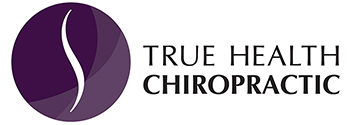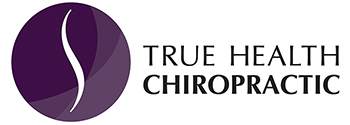The Benefits Of Massage
Massage can:
- Alleviate low-back pain and improve range of motion.
- Assist with shorter, easier labor for expectant mothers and shorten maternity hospital stays.
- Ease medication dependence.
- Enhance immunity by stimulating lymph flow—the body’s natural defense system.
- Exercise and stretch weak, tight, or atrophied muscles.
- Help athletes of any level prepare for, and recover from, strenuous workouts.
- Improve the condition of the body’s largest organ—the skin.
- Increase joint flexibility.
- Lessen depression and anxiety.
- Promote tissue regeneration, reducing scar tissue and stretch marks.
- Pump oxygen and nutrients into tissues and vital organs, improving circulation.
- Reduce postsurgery adhesions and swelling.
- Reduce spasms and cramping.
- Relax and soften injured, tired, and overused muscles.
- Release endorphins—amino acids that work as the body’s natural painkiller.
- Relieve migraine pain.
A Powerful Ally
There’s no denying the power of bodywork. Regardless of the adjectives we assign to it (pampering, rejuvenating, therapeutic) or the reasons we seek it out (a luxurious treat, stress relief, pain management), massage therapy can be a powerful ally in your healthcare regimen.
Experts estimate that upwards of ninety percent of disease is stress related. And perhaps nothing ages us faster, internally and externally, than high stress. While eliminating anxiety and pressure altogether in this fast-paced world may be idealistic, massage can, without a doubt, help manage stress.
This translates into:
- Decreased anxiety.
- Enhanced sleep quality.
- Greater energy.
- Improved concentration.
- Increased circulation.
- Reduced fatigue.
Furthermore, clients often report a sense of perspective and clarity after receiving a massage. The emotional balance bodywork provides can often be just as vital and valuable as the more tangible physical benefits.
Profound Effects
In response to massage, specific physiological and chemical changes cascade throughout the body, with profound effects.
Research shows that with massage:
- Arthritis sufferers note fewer aches and less stiffness and pain.
- Asthmatic children show better pulmonary function and increased peak air flow.
- Burn injury patients report reduced pain, itching, and anxiety.
- High blood pressure patients demonstrate lower diastolic blood pressure, anxiety, and stress hormones.
- Premenstrual syndrome sufferers have decreased water retention and cramping.
- Preterm infants have improved weight gain.
Increase the Benefits with Frequent Visits
Getting a massage can do you a world of good. And getting massage frequently can do even more. This is the beauty of bodywork. Taking part in this form of regularly scheduled self-care can play a huge part in how healthy you’ll be and how youthful you’ll remain with each passing year. Budgeting time and money for bodywork at consistent intervals is truly an investment in your health. And remember: just because massage feels like a pampering treat doesn’t mean it is any less therapeutic. Consider massage appointments a necessary piece of your health and wellness plan, and work with your practitioner to establish a treatment schedule that best meets your needs.
from massagetherapy.com
Types of massage
Neuromuscular Therapy: The most effective type of massage therapy for lower back pain is neuromuscular therapy. Neuromuscular therapy is also called trigger point myotherapy. The American Academy of Pain Management recognizes this form of massage therapy as an effective treatment for back pain caused by soft tissue injury (such as a muscle strain).
Neuromuscular therapy consists of alternating levels of concentrated pressure on the areas of muscle spasm. The massage therapy pressure is usually applied with the fingers, knuckles, or elbow. Once applied to a muscle spasm, the pressure should not vary for ten to thirty seconds.
Swedish/Relaxation: The most widely recognized and commonly used category of massage is the Swedish massage. The Swedish massage techniques vary from light to vigorous. Swedish massage uses five styles of strokes. The five basic strokes are effleurage (sliding or gliding), petrissage (kneading), tapotement (rhythmic tapping), friction (cross fiber or with the fibers) and vibration/shaking.
Sports Massage:
Also known as manual therapy, manipulative therapy, or manual & manipulative therapy, this is a physical treatment primarily used on the neuromusculoskeletal system to treat pain and disability. It most commonly includes kneading and manipulation of muscles, joint mobilization and joint manipulation.
Pre-natal Massage:
Massage therapy performed during pregnancy can reduce anxiety, decrease symptoms of depression, relieve muscle aches and joint pains, and improve labor outcomes and newborn health.
Myofascial Release:
Myofascial Release is a safe and very effective hands-on technique that involves applying gentle sustained pressure into the Myofascial connective tissue restrictions to eliminate pain and restore motion.
Trauma, inflammatory responses, and/or surgical procedures create Myofascial restrictions that can produce tensile pressures of approximately 2,000 pounds per square inch on pain sensitive structures that do not show up in many of the standard tests. We promote independence through education in proper body mechanics and movement, self treatment instruction, enhancement of strength, improved flexibility, and postural and movement awareness.
Hot Stone:
Hot stone massage is a specialty massage where the therapist uses smooth, heated stones as an extension of their own hands, or by placing them on the body. The heat can be both deeply relaxing and help warm up tight muscles so the therapist can work more deeply, more quickly.
Cupping:
Cupping refers to an ancient Chinese practice in which a cup is applied to the skin and the pressure in the cup is reduced (by using change in heat or by suctioning out air), so that the skin and superficial muscle layer is drawn into and held in the cup. In some cases, the cup may be moved while the suction of skin is active, causing a regional pulling of the skin and muscle (the technique is called gliding cupping). The skin becomes reddened due to the congestion of blood flow. The cup is removed by pressing the skin along side it to allow some outside air to leak into it, thus equalizing the pressure and releasing it. Some bruising along the site of the rim of the cup is expected. Cupping is mainly recommended for the treatment of pain. The areas of the body that are fleshy are preferred sites for cupping.

